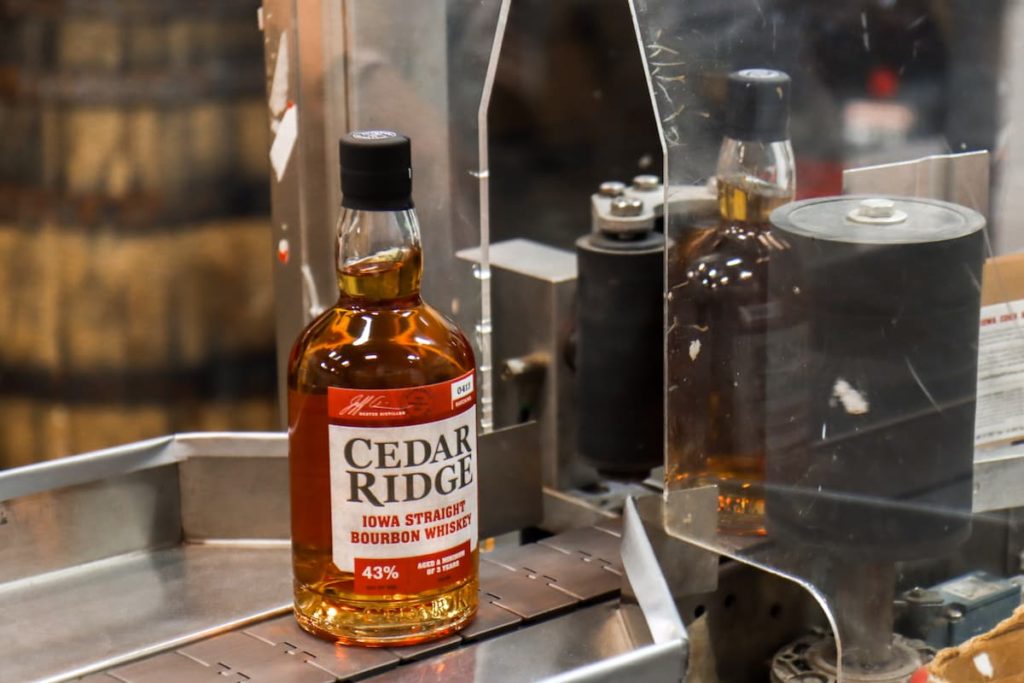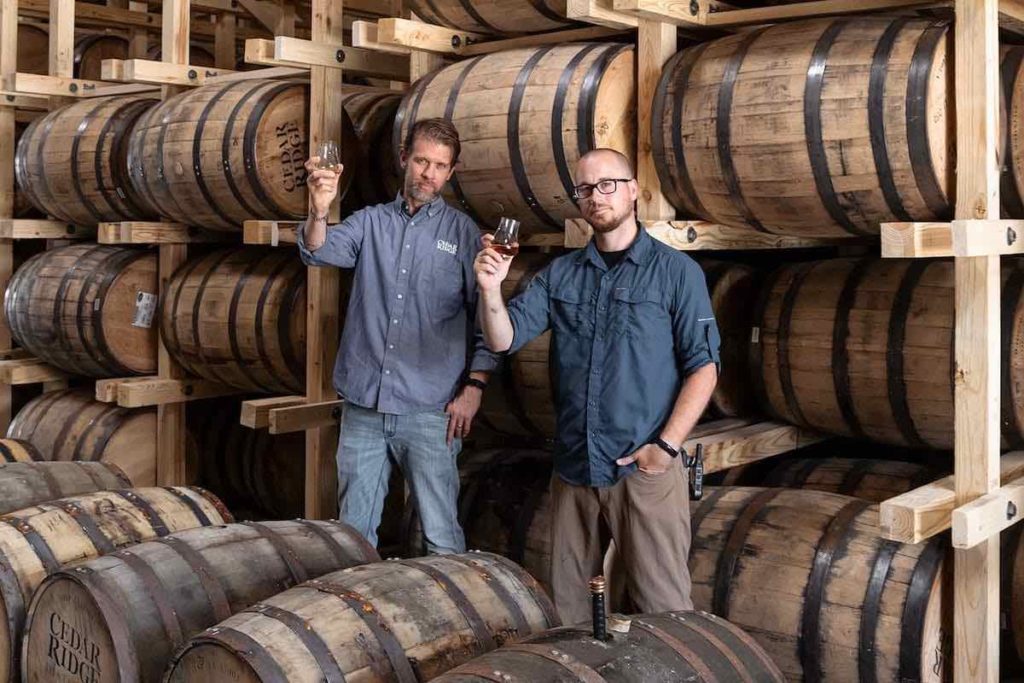The term “single malt” comes pre-loaded with associations. Speak its name, and you might imagine a rocky, wave-battered island off the Scottish coast, or a castle-like distillery nestled in the Highlands. But how about Swisher, Iowa?
You might want to get a visual soon, as the Eastern Iowan town of 914 hosts Cedar Ridge, which distills a locally booming bourbon as well as a single malt that’s set for nation-wide expansion.
Cedar Ridge Winery and Distillery was founded in 2005 and can claim to be the state’s first legal distillery since prohibition and its sole winery/distillery combination. It began as a pre-retirement project for founder Jeff Quint, but has since become a family business. Today Jeff serves as its owner and founder alongside his wife Laurie, while his son Murphy—a veteran of Stranahan’s Colorado Whiskey—acts as its head distiller and director of operations.
Locally, the distiller is best known for its Iowa Straight Bourbon Whiskey, which is naturally made from Iowa corn—most of which comes from the Quint family farm. “What Iowa does is corn. That’s what we’ve been doing since the beginning of time,” Murphy says.
In August of 2020, Cedar Ridge became the best-selling bourbon in Iowa, pulling ahead of Maker’s Mark and Jim Beam. Jeff credits this to a fiercely loyal local following, and the success of a “Sorry Kentucky” ad campaign.
“Basically, apologizing to Kentucky for kicking their asses, selling whiskey here in Iowa,” Jeff says in summary. “We’re the corn producing state, and bourbon’s made from corn. Sorry, Kentucky.”
With its home state conquered, Cedar Ridge is looking to expand the bourbon’s reach in Iowa’s contiguous states. But nationally, they’re turning their attention to a different grain: malted barley.

“In bourbon, the big players can have their way with you. But in American single malt, the big players don’t have any,” Jeff says. “They’ve got to be ramping up on it. But really, the American single malt category is owned by the craft distilleries because the big guys weren’t doing it.”
Cedar Ridge is uniquely positioned to exploit this opportunity, as its winemaking and bourbon-distilling operations complement the production of its single malt whiskey. That single malt, which is dubbed The QuintEssential—despite Jeff and Murphy’s very Midwestern reluctance to champion the family name—is distilled on-site from 100% two-row pale malted barley before entering American oak casks that were freshly emptied of Cedar Ridge bourbon. After aging for two to three years in ex-bourbon, the single malt will be transferred to a wide variety of cask types including port, sherry, rum, brandy, cherry wood, virgin American oak, and more. Much of the wine and port casks used come directly from Cedar Ridge’s winery, which sits on the same tract of land as its distillery.
“The best thing it contributes is that we’ve got these fresh, empty barrels that are still wet on the inside that we can use to age our American single malt,” says Murphy about the wine side of the business.

After the single malt has rested for a further two to three years in this diverse mix of casks, Murphy will carefully select which can be added to a pair of 1,100 gallon oak solera vats that will marry their flavors together. True to the solera method, each batch of single malt—Cedar Ridge is now on its seventh—requires draining the vat halfway before re-filling it to ensure that the blend is constantly evolving and changing slightly from batch-to-batch.
The process that produces the QuintEssential single malt has a provenance that can be found in Scotland—albeit at different distillers. It’s the result of a trip Jeff took to Scotland in the brand’s infancy, when he learned that Glenfiddich produced their 15-year-old in a single solera vat while neighboring Balvenie employed a doublewood treatment.
“When I came back, I thought I really love the doublewood concept of giving it two cask treatments, but I really love the solera tank solution, too,” Jeff says. “So we’re like, hell, we’ll do both. We give it two wood treatments, and then it all gets married in a solera.”
At the time of my visit to Swisher, I witnessed Murphy begin the process of filling the solera vats for the seventh batch of QuintEssential. Anyone who wants to take a crack at the latest from Iowa’s single malt pioneer should have the opportunity soon.



